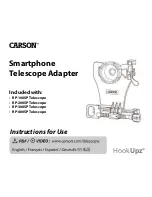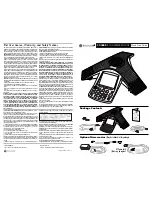
LGE Internal Use Only
Copyright © 2007 LG Electronics. Inc. All right reserved.
Only for training and service purposes
3. TECHNICAL BRIEF
- 29 -
3.5.2 UMTS duplexer
(FL35_UMTS2100: SAYZY1G95EA0B00, FL18_UMTS800 : EFSD835MF2S2) A UMTS duplexer
splits a single operating band into receive and transmit paths. Important performance requirements
include;
■
Insertion loss . this component is also in the receive and transmit paths ; In the L704i typical losses :
UMTS2100_ Tx = 1.45 dB, UMTS2100_ Rx = 1.86 dB and UMTS800_ Tx =0.83 dB, UMTS800_ Rx
= 1.23 dB
■
Out-of-band rejection or attenuation . the duplexer provides input selectivity for the receiver, output
filtering for the transmitter, and isolation between the two. Rejection levels for both paths are
specified over a number of frequency ranges. Two Tx-to-Rx isolation levels are critical to receiver
performance:
■
Rx-band isolation . the transmitter is specified for out-of-band noise falling into the Rx band. This
noise leaks from the transmit path into the receive path, and must be limited to avoid degrading
receiver sensitivity. The required Rx-band isolation depends on the PA out of-band noise levels and
Rx-band losses between the PA and LNA. Minimum duplexer Rx band isolation value is about 46
dB.
■
Tx-band isolation . the transmit channel power also leaks into the receiver. In this case, the leakage
is outside the receiver passband but at a relatively high level. It combines with Rx band jammers to
create cross-modulation products that fall in-band to desensitize the receiver. The required Tx-band
isolation depends on the PA channel power and Tx-band losses between the PA and LNA. Minimum
duplexer Tx-band isolation value is about 55 dB.
■
Passband ripple . the loss of this fairly narrowband device is not flat across its passband. Passband
ripple increases the receive or transmit insertion loss at specific frequencies, creating performance
variations across the band.s channels, and should be controlled.
■
Return loss . minimize mismatch losses with typical return losses of 10 dB or more (VSWR <2:1).
■
Power handling . high power levels in the transmit path must be accommodated without degraded
performance. The specified level depends on the operating band class and mobile station class (per
the applicable standard), as well as circuit losses and antenna EIRP. Several duplexer
characteristics depend upon its source and load impedances. QUALCOMM strongly recommends
an isolator be used between the UMTS PA and duplexer to assure proper performance.
















































